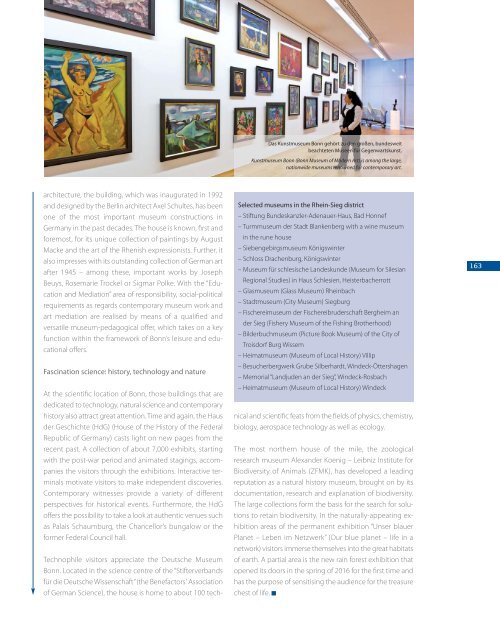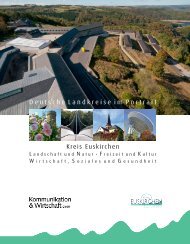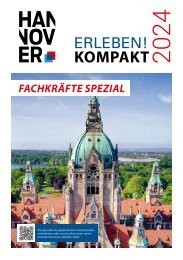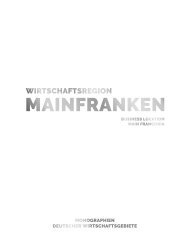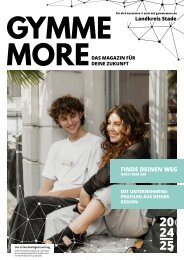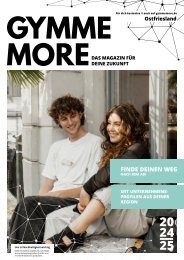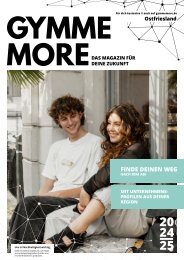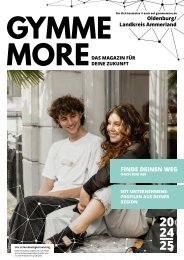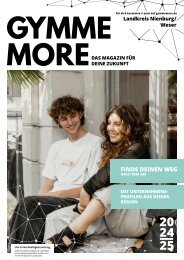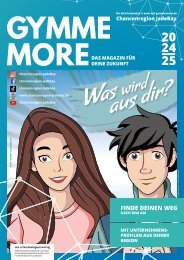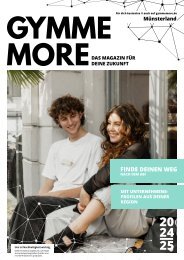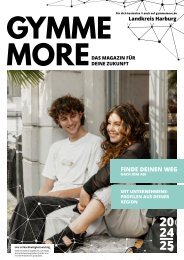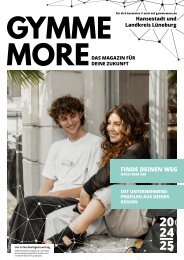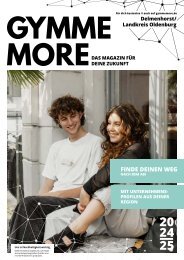Monographie Bonn-Rhein-Sieg
You also want an ePaper? Increase the reach of your titles
YUMPU automatically turns print PDFs into web optimized ePapers that Google loves.
Das Kunstmuseum <strong>Bonn</strong> gehört zu den großen, bundesweit<br />
beachteten Museen für Gegenwartskunst.<br />
Kunstmuseum <strong>Bonn</strong> (<strong>Bonn</strong> Museum of Modern Art) is among the large,<br />
nationwide museums renowned for contemporary art.<br />
architecture, the building, which was inaugurated in 1992<br />
and designed by the Berlin architect Axel Schultes, has been<br />
one of the most important museum constructions in<br />
Germany in the past decades. The house is known, first and<br />
foremost, for its unique collection of paintings by August<br />
Macke and the art of the Rhenish expressionists. Further, it<br />
also impresses with its outstanding collection of German art<br />
after 1945 – among these, important works by Joseph<br />
Beuys, Rosemarie Trockel or Sigmar Polke. With the “Edu -<br />
cation and Mediation” area of responsibility, social-political<br />
requirements as regards contemporary museum work and<br />
art mediation are realised by means of a qualified and<br />
versatile museum-pedagogical offer, which takes on a key<br />
function within the framework of <strong>Bonn</strong>’s leisure and edu -<br />
cational offers.<br />
Fascination science: history, technology and nature<br />
At the scientific location of <strong>Bonn</strong>, those buildings that are<br />
dedicated to technology, natural science and contemporary<br />
history also attract great attention. Time and again, the Haus<br />
der Geschichte (HdG) (House of the History of the Federal<br />
Republic of Germany) casts light on new pages from the<br />
recent past. A collection of about 7,000 exhibits, starting<br />
with the post-war period and animated stagings, accom -<br />
panies the visitors through the exhibitions. Interactive terminals<br />
motivate visitors to make independent discoveries.<br />
Contemporary witnesses provide a variety of different<br />
perspectives for historical events. Furthermore, the HdG<br />
offers the possibility to take a look at authentic venues such<br />
as Palais Schaumburg, the Chancellor’s bungalow or the<br />
former Federal Council hall.<br />
Selected museums in the Rhein-<strong>Sieg</strong> district<br />
– Stiftung Bundeskanzler-Adenauer-Haus, Bad Honnef<br />
– Turmmuseum der Stadt Blankenberg with a wine museum<br />
in the rune house<br />
– Siebengebirgsmuseum Königswinter<br />
– Schloss Drachenburg, Königswinter<br />
– Museum für schlesische Landeskunde (Museum for Silesian<br />
Regional Studies) in Haus Schlesien, Heisterbacherrott<br />
– Glasmuseum (Glass Museum) Rheinbach<br />
– Stadtmuseum (City Museum) <strong>Sieg</strong>burg<br />
– Fischereimuseum der Fischereibruderschaft Bergheim an<br />
der <strong>Sieg</strong> (Fishery Museum of the Fishing Brotherhood)<br />
– Bilderbuchmuseum (Picture Book Museum) of the City of<br />
Troisdorf Burg Wissem<br />
– Heimatmuseum (Museum of Local History) Villip<br />
– Besucherbergwerk Grube Silberhardt, Windeck-Öttershagen<br />
– Memorial “Landjuden an der <strong>Sieg</strong>”, Windeck-Rosbach<br />
– Heimatmuseum (Museum of Local History) Windeck<br />
Technophile visitors appreciate the Deutsche Museum<br />
<strong>Bonn</strong>. Located in the science centre of the “Stifterverbands<br />
für die Deutsche Wissenschaft” (the Benefactors' Association<br />
of German Science), the house is home to about 100 technical<br />
and scientific feats from the fields of physics, chemistry,<br />
biology, aerospace technology as well as ecology.<br />
The most northern house of the mile, the zoological<br />
research museum Alexander Koenig – Leibniz Institute for<br />
Biodiversity of Animals (ZFMK), has developed a leading<br />
reputation as a natural history museum, brought on by its<br />
documentation, research and explanation of biodiversity.<br />
The large collections form the basis for the search for solutions<br />
to retain biodiversity. In the naturally-appearing ex -<br />
hibition areas of the permanent exhibition “Unser blauer<br />
Planet – Leben im Netzwerk” (Our blue planet – life in a<br />
network) visitors immerse themselves into the great habitats<br />
of earth. A partial area is the new rain forest exhibition that<br />
opened its doors in the spring of 2016 for the first time and<br />
has the purpose of sensitising the audience for the treasure<br />
chest of life.<br />
163


